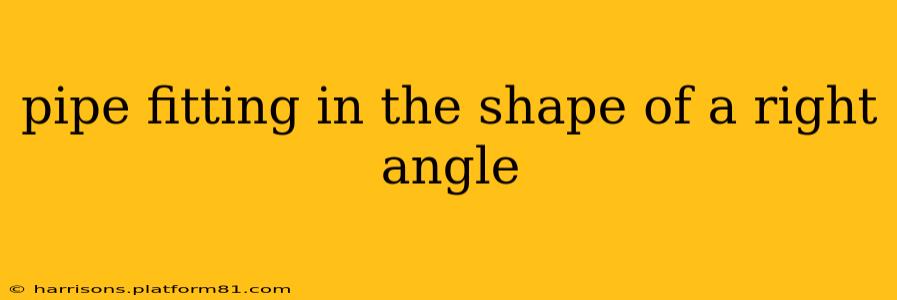Pipe fittings are essential components in plumbing, HVAC, and industrial systems, facilitating changes in pipe direction, size, or connection type. One of the most common types is the right-angle fitting, also known as an elbow fitting. This guide explores the different types, applications, materials, and considerations for choosing the right right-angle pipe fitting for your project.
What are the different types of right-angle pipe fittings?
Several types of right-angle fittings cater to various needs and applications. These include:
-
90-degree elbows: These are the most common type, providing a 90-degree turn in the pipe's direction. They come in various materials, sizes, and schedules (wall thicknesses).
-
Street elbows: These have one end that's threaded and the other end that's plain or socket welded. They're particularly useful when connecting threaded pipe to a system using different joining methods.
-
Reducing elbows: These fittings reduce the pipe diameter while simultaneously changing the direction by 90 degrees. They're important for transitioning between different pipe sizes within a system.
-
Return bends: Similar to elbows, but designed for tighter spaces or where a more compact fitting is needed.
What are the common materials used for right-angle pipe fittings?
The choice of material significantly impacts the fitting's durability, corrosion resistance, and suitability for specific applications. Common materials include:
-
Steel: Robust and durable, suitable for high-pressure applications. Galvanized steel offers added corrosion protection.
-
Copper: Excellent corrosion resistance, making it ideal for potable water systems.
-
PVC: Lightweight, inexpensive, and resistant to corrosion, but less suitable for high-pressure or high-temperature applications.
-
CPVC: A chlorinated version of PVC, offering improved temperature resistance, making it suitable for hot water applications.
-
Cast Iron: Historically common, but less frequently used now due to weight and susceptibility to corrosion.
What are the applications of right-angle pipe fittings?
Right-angle fittings find broad applications across numerous industries:
-
Plumbing: Connecting pipes to appliances, fixtures, and changing direction within plumbing systems.
-
HVAC: Used extensively in air conditioning and heating systems for directing airflow and refrigerant lines.
-
Industrial piping: Essential for chemical processing, oil and gas, and other industrial applications where precise fluid handling is vital.
-
Fire protection systems: Critical for directing water flow in fire sprinkler and suppression systems.
How do I choose the right right-angle pipe fitting for my project?
Selecting the appropriate fitting involves considering several factors:
-
Pipe size and schedule: Ensure the fitting matches the diameter and wall thickness of your pipe.
-
Material compatibility: Choose a material that's compatible with the fluid being transported and the environmental conditions.
-
Pressure rating: Select a fitting with a pressure rating that exceeds the expected operating pressure.
-
Connection type: Consider whether you need threaded, solvent welded, or flanged connections.
-
Application requirements: The specific application will dictate material choices, size, and other considerations.
What are some common problems with right-angle pipe fittings?
While generally reliable, some issues can arise:
-
Leaks: Inadequate sealing or improper installation can lead to leaks.
-
Corrosion: Improper material selection can lead to corrosion over time, especially in harsh environments.
-
Stress cracking: Excessive pressure or improper installation can cause stress cracking in the fitting.
-
Misalignment: Incorrect installation can lead to misalignment, affecting flow and potentially causing damage.
How do I install a right-angle pipe fitting?
Installation methods vary based on the connection type (threaded, solvent welded, flanged, etc.). It's crucial to follow the manufacturer's instructions and use appropriate tools and sealant for a secure and leak-free connection. Improper installation can lead to significant problems and safety hazards. Consulting a professional plumber or pipe fitter for complex installations is recommended.
This comprehensive guide provides a detailed overview of right-angle pipe fittings. Remember, selecting and installing the correct fitting is crucial for the functionality and safety of your system. If you are unsure about any aspect of the process, always seek professional advice.
